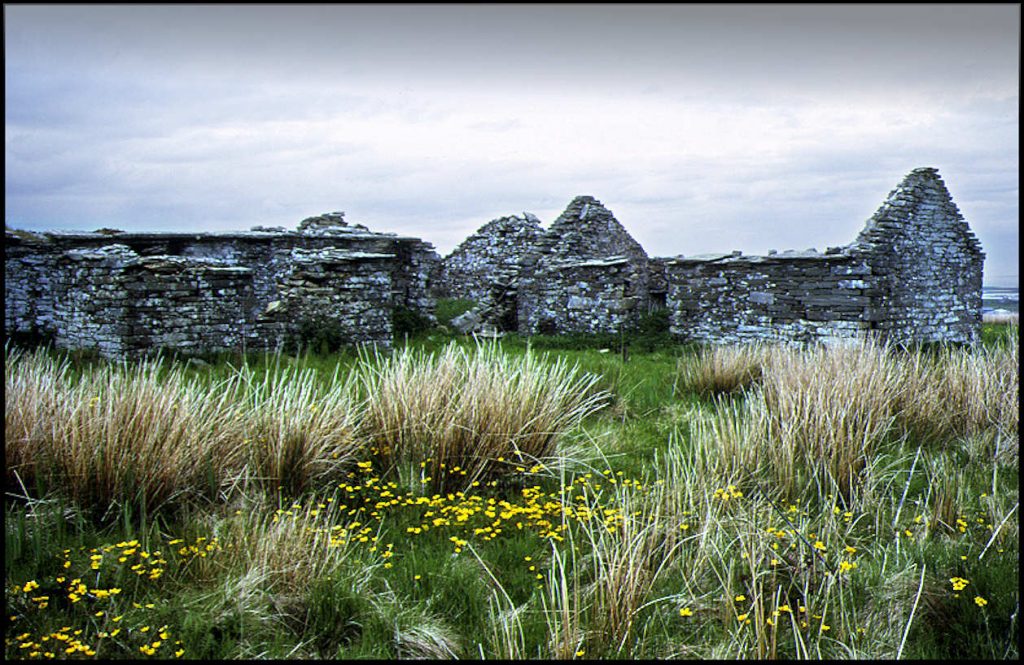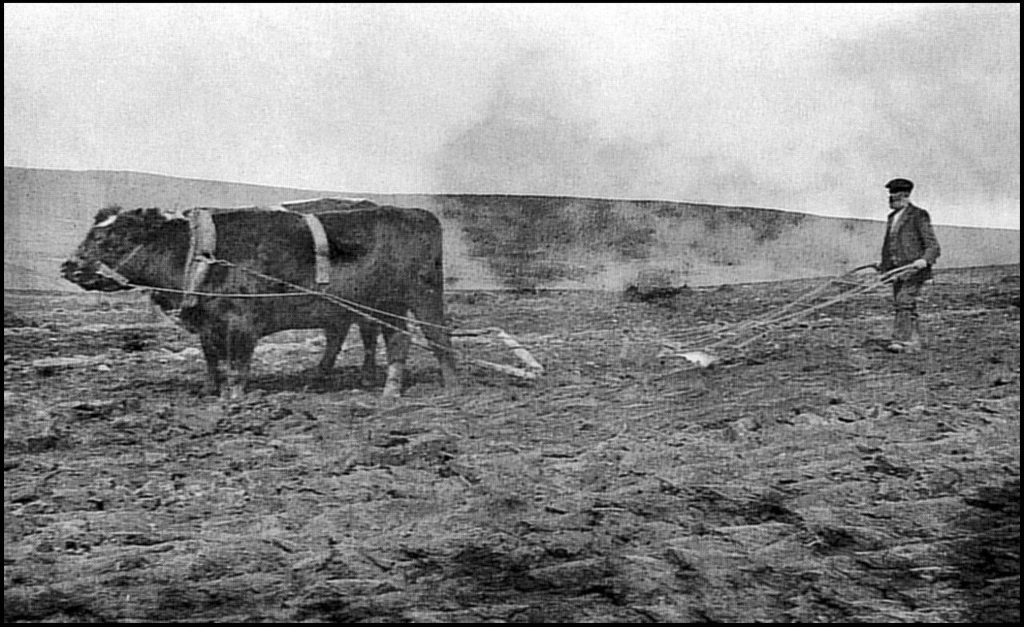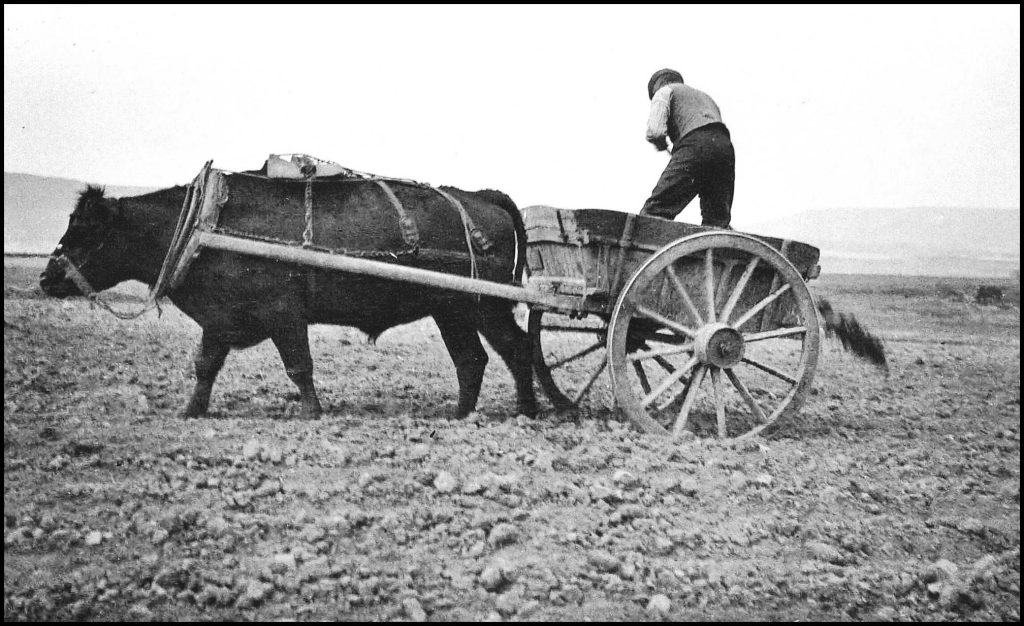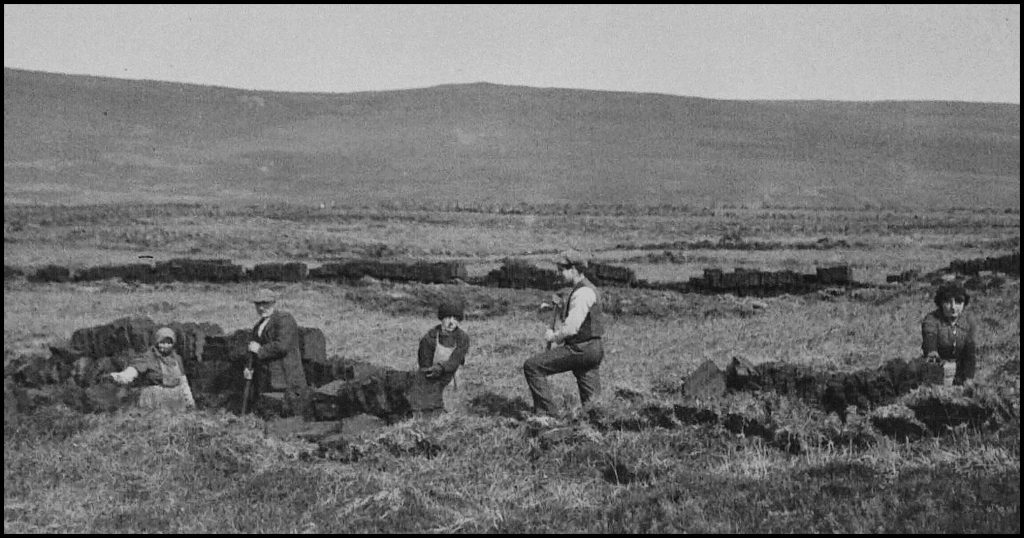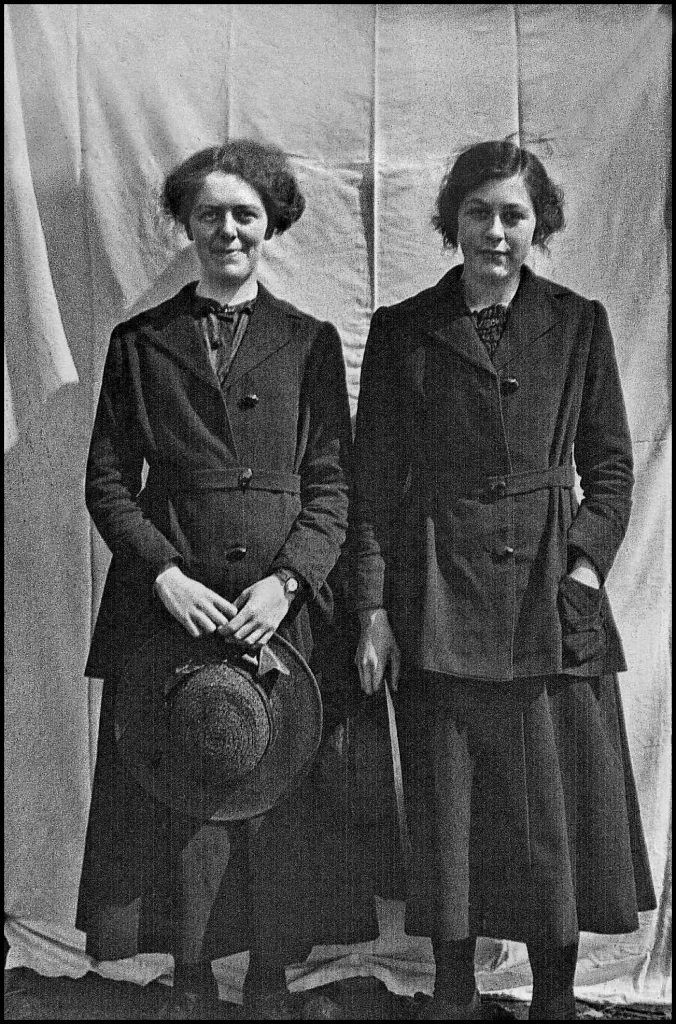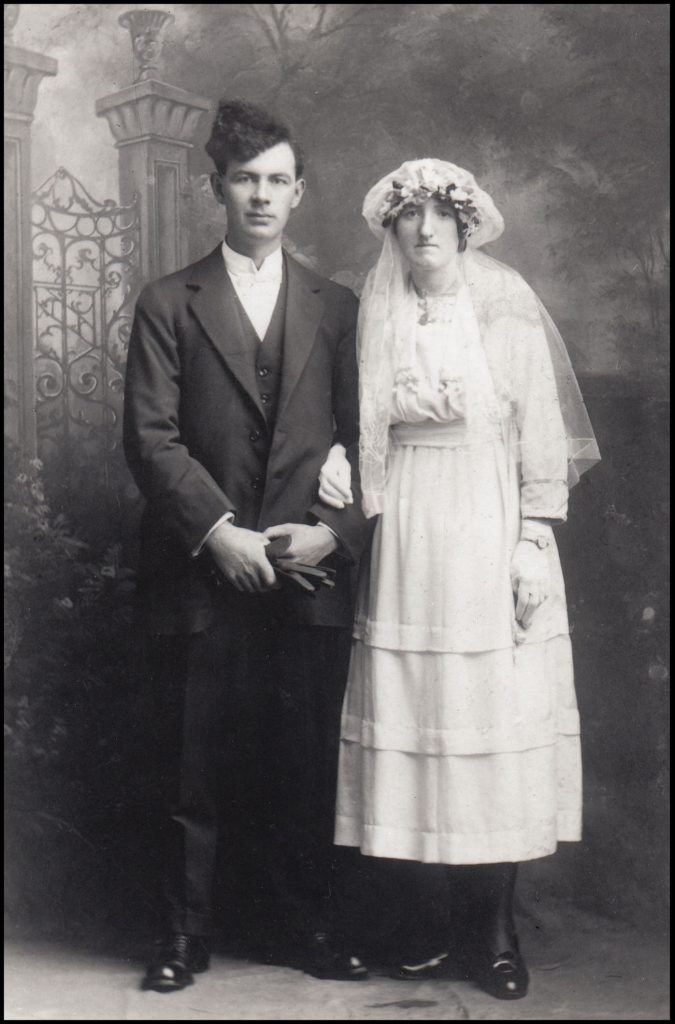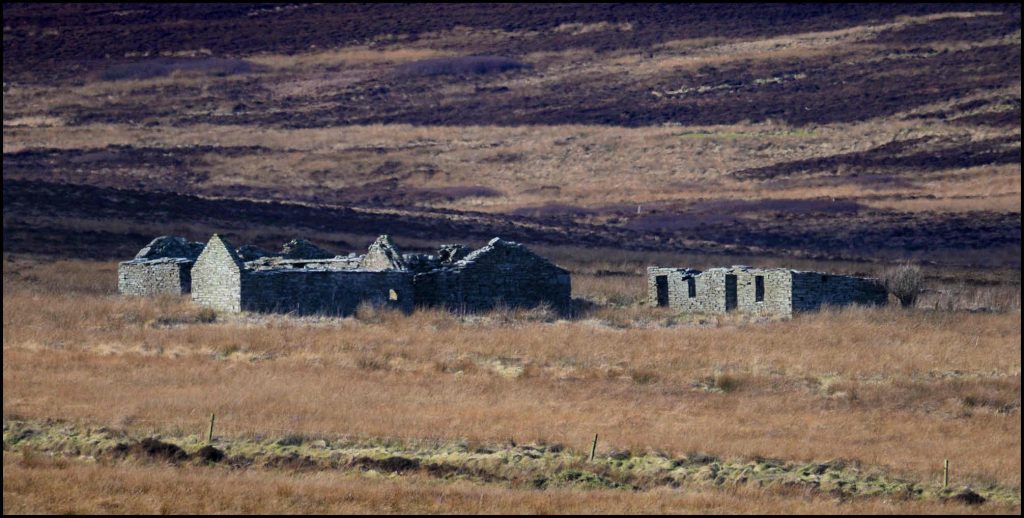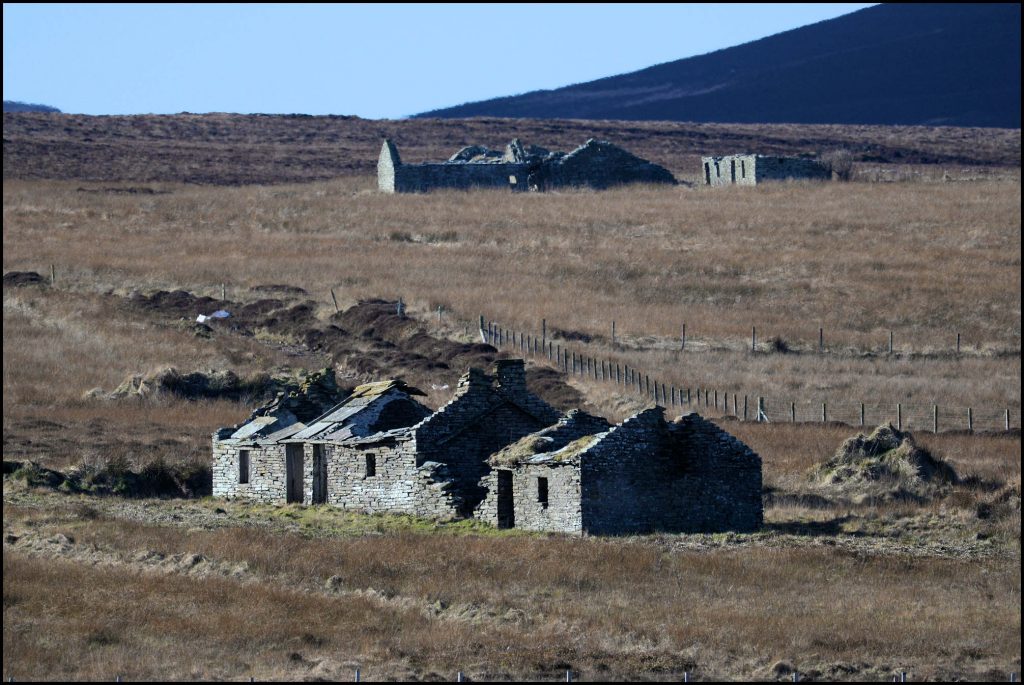To tell the story of Triblo and the folk who lived there we first have to pay a visit to Quandale, and a house named Stour-meadow. A Rousay Birth Record of 1822 has it spelled Staurameirie, but in the census of 1841, the house was called Stourmary and it was where 25-year-old shoemaker George Leonard lived with his wife Margaret Clouston. The annual rent on the property at this time was £1. George was the son of John Leonard and Isabella Inkster of nearby Grain and he was born in January 1816. Wife Margaret was the daughter of Magnus Clouston and Ann Flaws of Tou, and she was born on January 24th 1822 at Windbreck, close to the Parish School that served Quandale and the Westside. They married in September 1848, and initially they had three children whilst living in Quandale: Margaret was born in October 1849; Mary, in June 1851; and Ann, who was born in February 1854.
To tell the story of Triblo and the folk who lived there we first have to pay a visit to Quandale, and a house named Stour-meadow. A Rousay Birth Record of 1822 has it spelled Staurameirie, but in the census of 1841, the house was called Stourmary and it was where 25-year-old shoemaker George Leonard lived with his wife Margaret Clouston. The annual rent on the property at this time was £1.0.0. George was the son of John Leonard and Isabella Inkster of nearby Grain and he was born in January 1816. Wife Margaret was the daughter of Magnus Clouston and Ann Flaws of Tou, and she was born on January 24th 1822 at Windbreck, close to the Parish School that served Quandale and the Westside. They married in September 1848, and initially they had three children whilst living in Quandale: Margaret was born in October 1849; Mary, in June 1851; and Ann, who was born in February 1854.
George earned his living as a fisherman, but later found the produce of the land more profitable as he farmed the land around Triblo. George and Margaret had three more children whilst living there: Betsy, who was born in November 1857; George, in September 1862; and Isabella, who was born in December 1865. In 1855 George was paying a rent of £2 2s 0d. Between 1879 and 1887 this had risen to £6, but in 1888 George paid the lesser sum of £4 rent – ‘So reduced by the Crofters Commission!!!’ as the laird had written in his rent book. George had been brought forward to relate the story of the Quandale clearances to Lord Napier and his Royal Commission at Kirkwall in July 1883. Click > here < to read what he said.

In 1878 Betsy Leonard [born 1857] married John Craigie, son of John Craigie and Betsy Louttit of Shalter, who was born on March 4th 1859. They had ten children, the first of whom, Margaret, was born on January 24th 1879 at Triblo. Betsy, born on March 1st 1881, and William, on September 20th 1883, were born at Westness, and the next four children were born when the family lived at Shalter: Mary Catherine, on July 7th 1886; Isabella Marwick, on May 15th 1889; John Leonard on March 16th 1892; and Emily, on July 10th 1895.
George Leonard died on March 4th 1895, and his wife Margaret passed away in September 1903. Betsy, John and their family moved back to Triblo after George’s death. They had three more children: George, named after his grandfather, was born on November 23rd 1898; Hugh Gibson, born on May 11th 1900, and Annie Marwick, who was born at 9.30pm on January 18th 1904.
John and Betsy Craigie with Hugh [left],
Bella, and George. c1915
[Orkney Library & Archive]

When World War 1 broke out in August 1914 many young men throughout Orkney enlisted. An estimated 688,000 Scotsmen joined up – and the sacrifice of Scots who served with the British Army during that War cannot be overstated, with almost a quarter losing their lives. Young George Craigie of Triblo was working at the Sourin mill with his father John when he boarded the boat to Kirkwall and signed along the dotted line. He was a Private in the 74th Battalion, Machine Gun Corps, when he was killed in action at the Quadrilateral, near Ronssoy on 21st September 1918, just 19 years of age, and agonisingly just six weeks before the Armistice.
The Battle of Epehy, St Emilie and Ronssoy was part of a general advance made against the Hindenburg Line on the Somme. The objective was to establish a line from which the Hindenburg line could be assaulted. The attack commenced at 5.30am on 18 September 1918, renewed on 19 September but again failed. September 20th was spent consolidating and strengthening the defences. On 21 September a third attack against the Quadrilateral began at dawn. At first everything went well, the objective seemed to have been taken but during the advance to occupy it was found to be still full of German machine-gunners which had either had not been ‘mopped up’ or had filtered in from the north. There were heavy losses and 20-year-old George Craigie was one of the many who lost their lives that day. Another attempt to capture the Quadrilateral was made the next day. Both trenches were taken after a hard and desperate fight and a foothold hold was established. George’s body was later recovered and he was buried in Grave I.AA.6, Unicorn Cemetery, Vend’huile, Aisne, France.
The family was particularly badly affected by World War I, losing not only a son, but also a grandson, Hugh Gibson of Oldman, and a nephew, John Marwick of Quoys.
George [left] and his younger brother Hugh
John Craigie was the miller at the Sourin Mill for many years, but after the death of his wife Betsy in 1932 he, and his daughters Bella and Annie [pictured above], ran the Queen’s Hotel in Kirkwall. – The following inscription can be read on the family headstone in the Brinian kirkyard:
“Erected in memory of Betsy Leonard beloved wife of John Craigie who died at Triblo 26 Jan 1932 aged 74 years. Also their son George who was killed in action in France 21 Sep 1918 aged 19 years. Also the above John Craigie who died at the Queens Hotel Kirkwall, 26 April 1943, aged 82.”
The picture above shows John and Betsy’s son John Leonard Craigie [born March 16th 1892] and Annie Brodie Stevenson on their wedding day, March 7th 1921.
At the time of marriage John was a 28-year-old joiner living in Garden Street, Kirkwall. His bride was the 24-year-old daughter of malt man John Brodie Stevenson and Isabella Cormack, Easdale, Kirkwall. The officiating minister was the Rev. William Barclay, and the witnesses were John’s older sister Bella, and Annie’s brother Oliver Corse Stevenson.

EASTAQUOY
The name of the croft of Eastaquoy in Sourin, midway between Quoys and Triblo, is a ‘transferred’ name. The original Eastaquoy, or Istaquoy, lay on the Westside between Ha’gate and Cott, high above Skaill. It was occupied in the 1840s and early 50s by farmer James Marwick, his wife Janet Craigie, and their children. A leased farm, Istaquoy was cleared in 1855 on the termination of its lease.
James Marwick was one of ten sons born to Hugh Marwick, Scockness, and Betsy Sinclair – collectively, and no doubt affectionately, known as her “Ten devils!” James, the third oldest of them, was born in 1798. He married his first wife Jean Marwick on December 19th 1826, and they had five children, born between 1827 and 1836 when they were living at Pow, Sourin. William was born in October 1827; James, in November 1829; Robina, in January 1832; Ann, in June 1834, but died in infancy; and a second Ann, who was born in April 1836. Jean’s death is on record as happening in 1836, so complications as a result of the birth of daughter Ann could have been the reason for her demise.
On August 5th the same year James married his second wife, Janet Craigie, daughter of James Craigie and Janet Grieve of Guidal, later Grips, Sourin, who was born in October 1810. They had five children: John, born in March 1838; Eleanor Traill, in August 1839; Hugh, in January 1842; Craigie, in July 1845; and David, who was born in July 1853. Having been cleared from the Westside James and his family moved to Sourin – and named their new dwelling Eastaquoy.
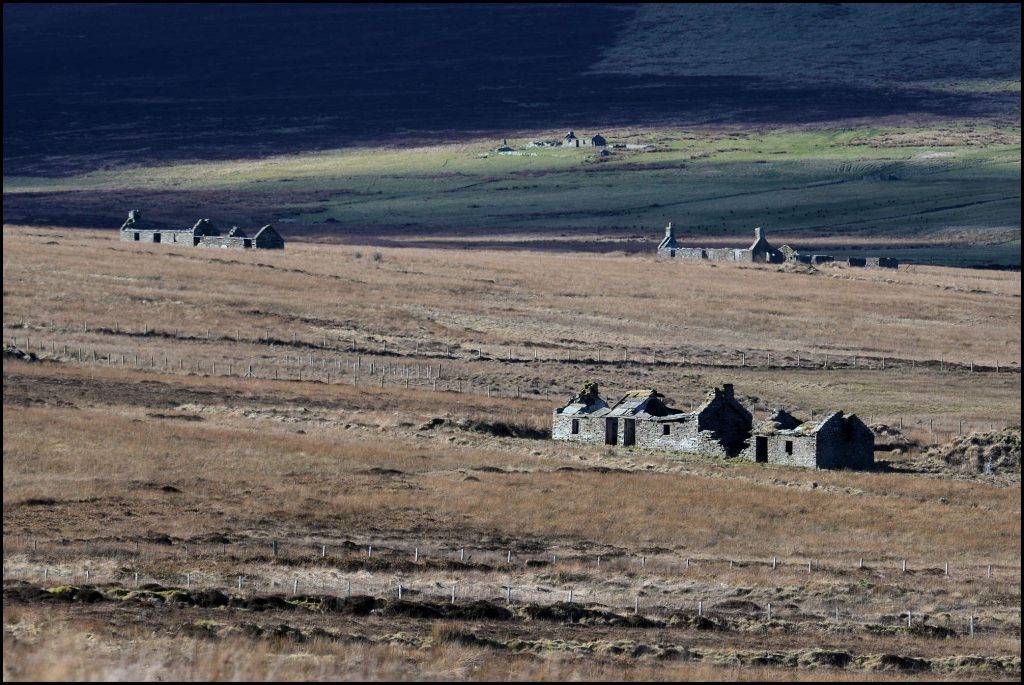
James Marwick died in March 1867. Come the time of the 1871 census James’s 39-year-old unmarried daughter Robina from his first marriage was living at Eastaquoy and working as an agricultural labourer. James’s widow Janet had other company too, for son Craigie Marwick, a fisherman, had married 23-year-old Ann Mowat from Evie on February 6th 1869, and they lived with her at Eastaquoy.
By 1881 Craigie and Ann Marwick had moved to Breck, farming its 36 acres of land. Janet still had company though, for youngest son David and his family had moved in. David was a fisherman, and married 29-year-old Anne Hercus of Eday in 1877. They already had two children: David Logie, born in November 1878; and Jessie Craigie, born in Jun 1880. Another five children would follow in due course.

David gave up fishing and he and his family moved up to Essaquoy, below Broland. That left the ageing Janet at Eastaquoy with Robina, who was earning a living as a wool spinner. Janet passed away on March 28th 1894, and Robina was joined at Eastaquoy by 61-year-old Mary Work, widow of crofter William Work who used to live at Breval. Both ladies made a little money by woolspinning and knitting.
[All black and white photos are courtesy of the Tommy Gibson Collection unless otherwise stated]
